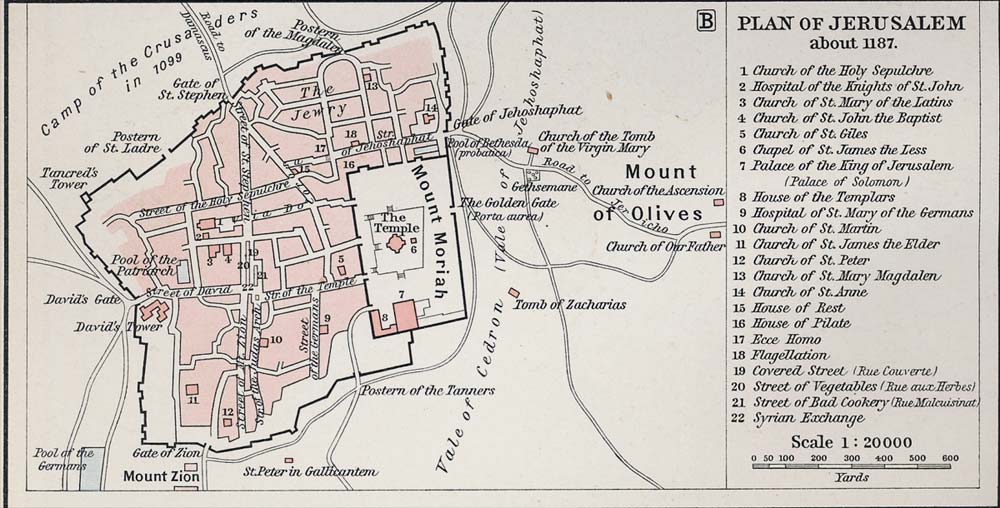Around 1050 the Amalfi merchant family De Pantaleon opened a hospital under the protection of St. John the Baptist in Jerusalem, close to the Holy Sepulchre. That is almost half a century before the first Crusade. An even earlier origin has been proposed. After the conquest of Jerusalem in 1099, this hospital developed further and the organisation was ultimately recognized as an independent Order by the Pope.
At the time a minor brother at the hospital cared for the sick and wounded. This may have been a monk of Provence origin, of whom little more is known than his name: father Gérard.
When in 1098 the barons of the First Crusade arrived at the walls of Jerusalem, it is unclear whether Gérard was among the Christians expelled by order of the Seljuk governor of the city, whether he decided to flee or to remain at his post. But we know that after the fall of the city to the Crusaders in the city, he was lead to Godfrey of Bouillon.
There he proposed to resume his task at the hospital, taking care of the many injured during the taking of the city. This was granted. The barons visited the hospital and were amazed by the dedication of brother Gérard. They decided on a strong financial reward, quickly followed by a donation to the hospital in the form of two fiefs, Montboon in Brabant and Hessilia in Palestine.
The monk tried to interest more people to assist in taking care of the many wounded and needy. Initially, four knights respond to the call and, among them, was Raymond du Puy. The Order was officially recognized by the papal bull Pie postulatio Voluntaris, issued by Pope Paschal II on February 15, 1113. The community aimed to ensure in the Holy City the sick and wounded. Originally no military tasks were considered. The first authentic notice of an intention on the part of the Hospitallers to occupy themselves with military matters, occurs in the bull of Pope Innocent II, dated 1130 AD.
The 1113 papal bull imposed on Gérard and his brothers the three classical vows of poverty, chastity and obedience, and a fourth, hospitality. In addition, the Pope authorized the community to elect successors to the founder totally free and independent, without any ecclesiastical or secular response. The Order was placed directly under the protection of Rome, thus escaping any external authority.
The monks decided to wear a black dress with a cross with eight branches, symbolizing the eight Beatitudes of the Sermon on the Mount (Matthew 5). Soon, the entire population and pilgrims honored the holders of the cross as a sign of dedication and generosity.
The above text is a slightly edited translation from the text at www.hospitaliers.info Top illustration shows a map of medieval Jerusalem in about 1187 (source); the bottom maps shows in somewhat more detail the "Hospitallers' Quarter" of Jerusalem (source).

No comments:
Post a Comment